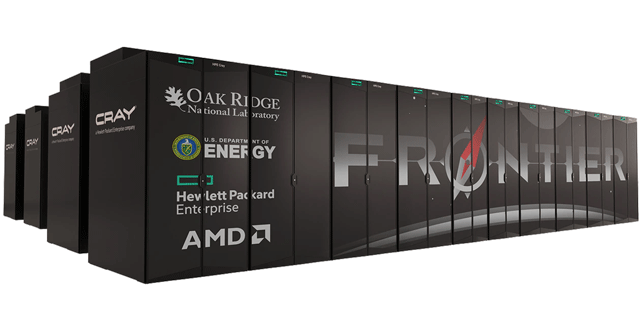
US’ Frontier overtakes Japan’s Fugaku as world’s most powerful and efficient supercomputer


The world’s first exascale supercomputer is not just the world’s most powerful by a margin – but it is also the most efficient. Frontier, developed by USA’s designated supercomputer facility, the Oak Ridge Leadership Computing Facility, is the world’s first supercomputer to cross the performance margin of 1 exaflops. With this, the supercomputer has surpassed Fugaku, belonging to Japan’s Riken Centre for Computational Science, as the world’s most powerful supercomputer right now.
Frontier’s nearest competitor, Fugaku, has a performance score of 442 petaflops on the Linpack benchmark – a standard for officially ranking global, publicly disclosed supercomputers. While Fugaku was based on Arm’s core designs, USA’s Frontier is powered by AMD.
Interestingly, Frontier is also said to be the most power efficient supercomputer built till date. According to reports, Frontier has a power consumption rating of 52.2 gigaflops per watt. This score outdoes the most efficient supercomputer till date, the Preferred Networks MN-3, which offered 39.4 gigaflops per watt in power rating.

The latest list of the world’s top 500 supercomputers is set to be unveiled in Germany in the coming days, and is considered to be the ‘official’ list of the world’s most powerful supercomputers.
To be sure, Frontier has been built as the first ‘true’ exascale supercomputer. The latter is a reference to conventional supercomputers (i.e. computing systems not built on quantum computing principles) that offer performance capability of more than 1 exaflop. While Japan’s Fugaku was billed as the first exascale supercomputer, Frontier can seemingly apply its peak, 1.1-exaflop computing power in real-world tasks and not just in benchmarks.
In its previous listing as of November 2021, India’s highest ranking in the supercomputer list came in at 102, with the Param Siddhi-AI. The latter belongs to India’s Centre for Development of Advanced Computing (C-DAC) – that offers peak performance of 3.3 petaflops on the Linpack benchmark scale.

Interestingly, conventional supercomputing stands at a point where it is geared to grow even further in its performance abilities – making exaflop-scale performance more regular among supercomputers, and approaching zettascale computing. It is, however, also tipped to make way for the early stages of quantum computing, which could take high performance computing to the next level.
